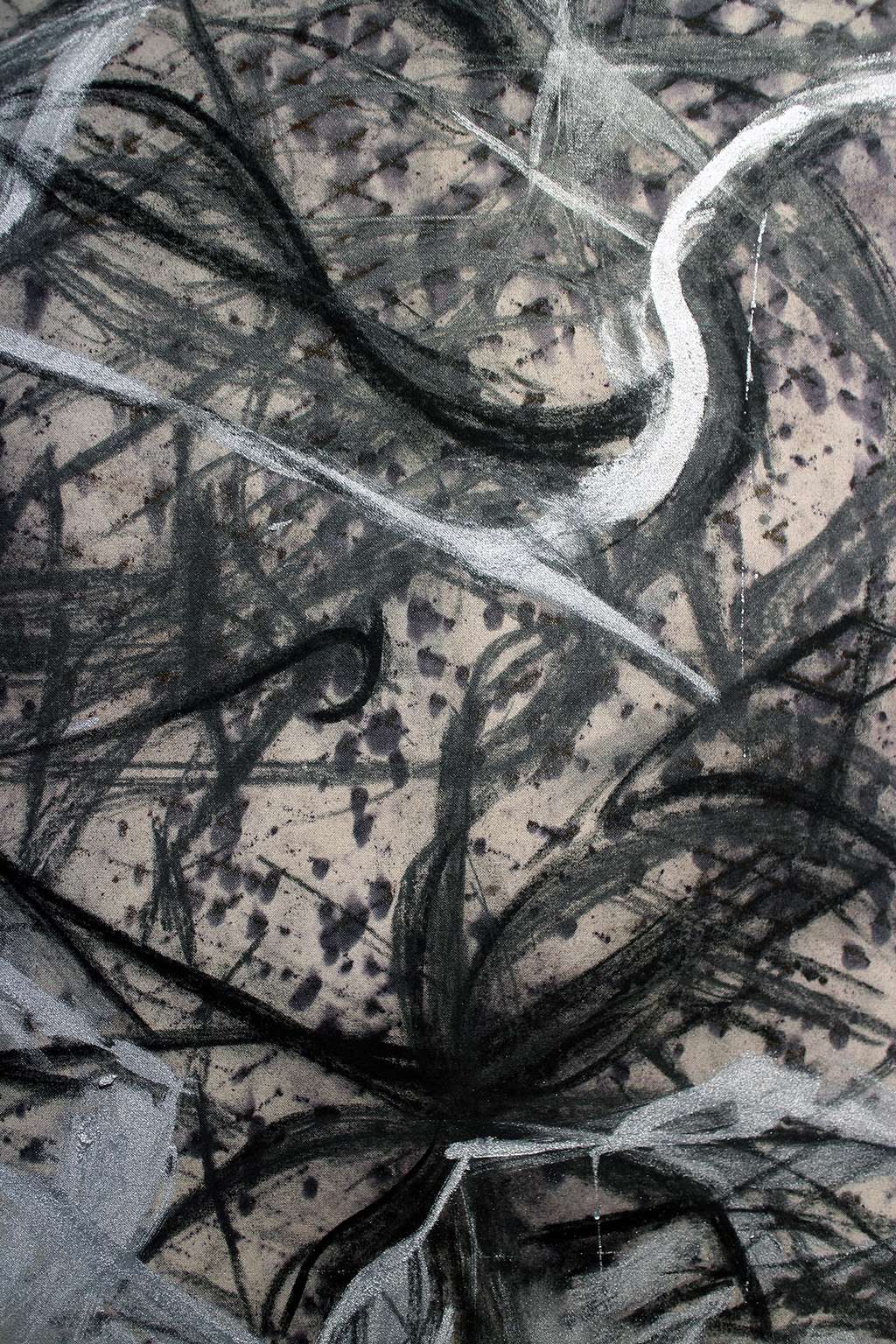
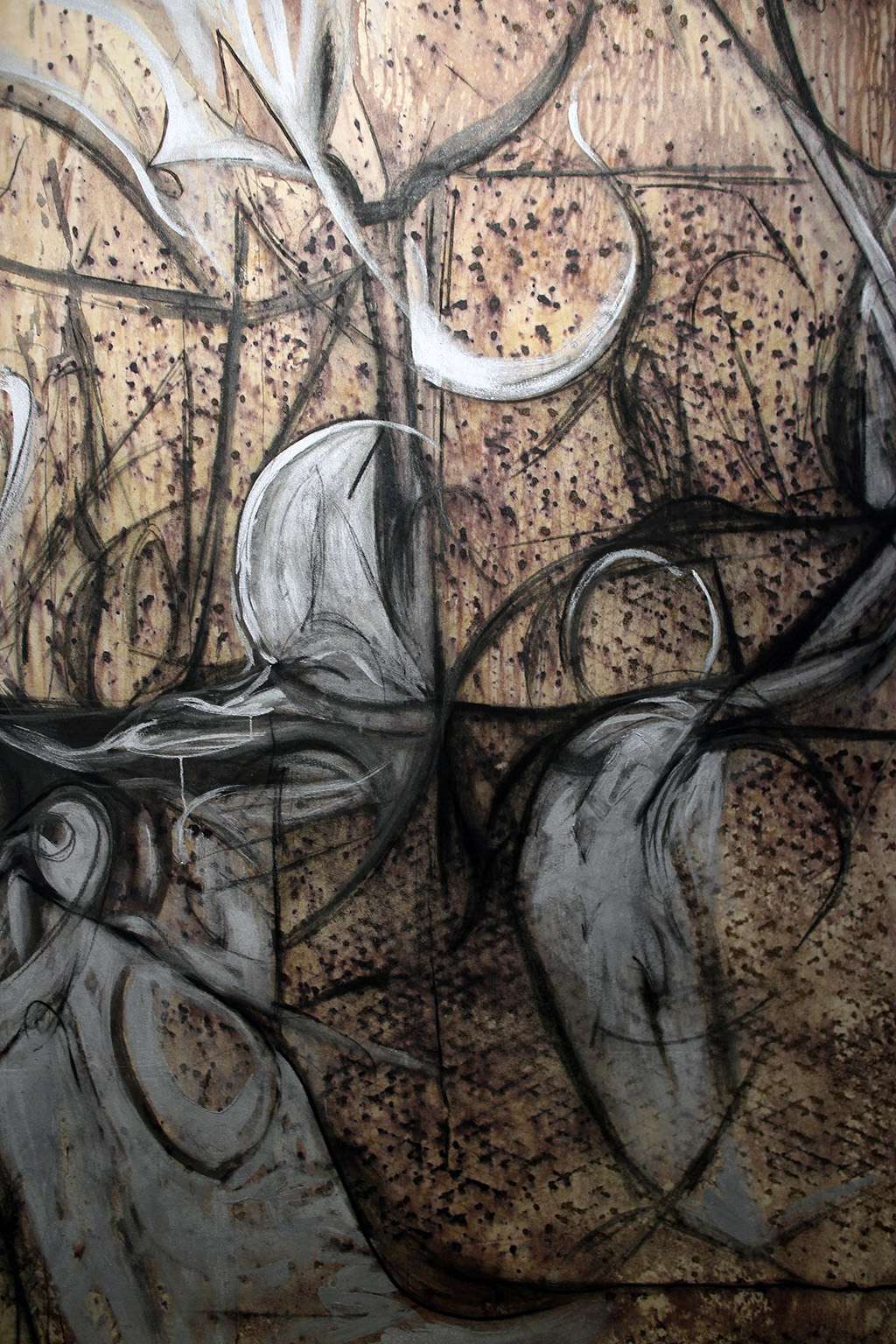
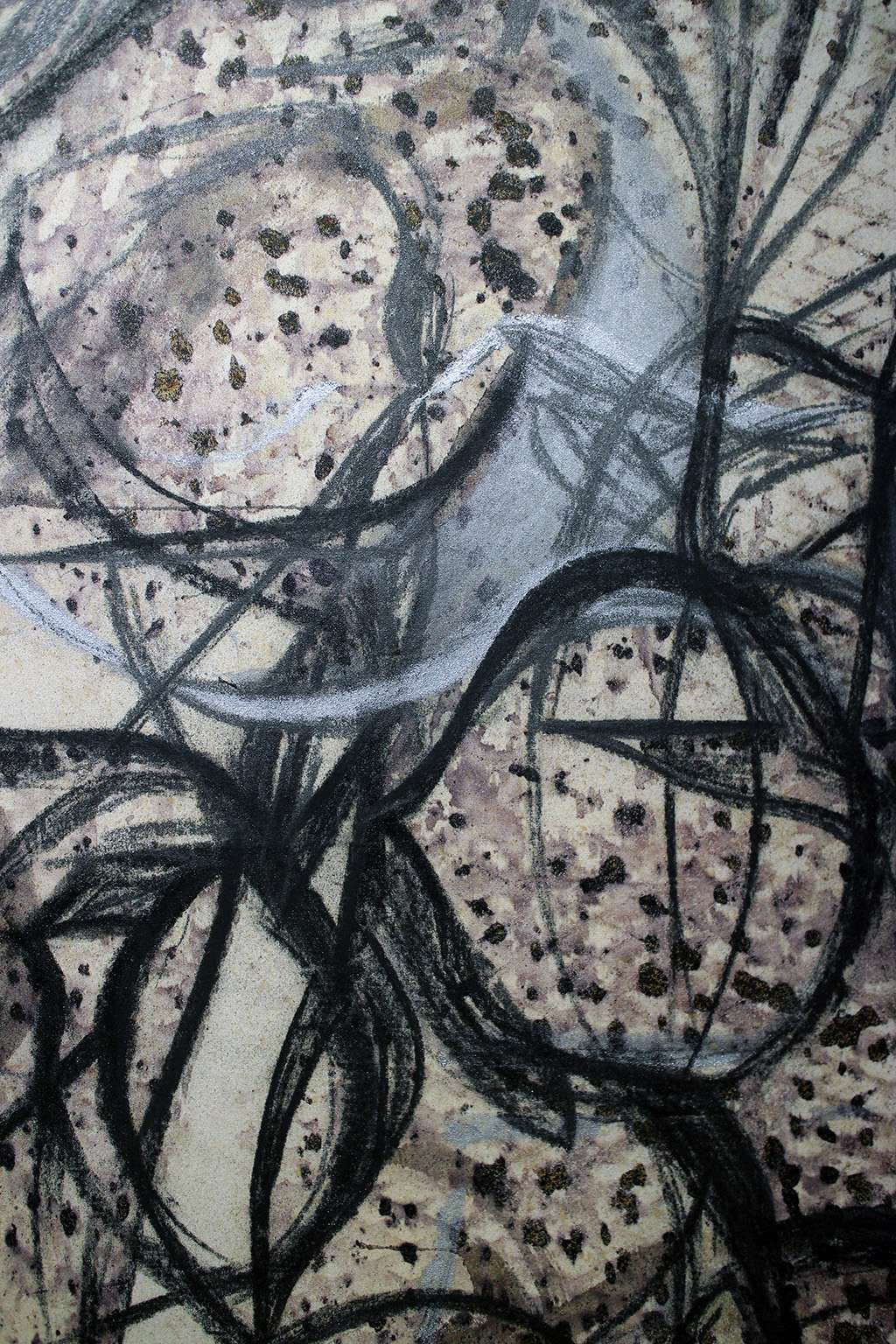
Described as “the manic cartography of an urban flaneur”, Bottrop’s compositions may resemble the frayed infrastructure and overlapping freeway feeders of the Ruhr area. But they also brim with alternative routes, some of which border the realm of science fiction, where concepts of time and existence have long become fluid.
Over the past few years, the artist’s characteristic choppy dashes have become more fluid, almost arabesque. Imbued with a sense of indispensability, they evoke the romantic idea of an innate drive that turns the subject into an art-producing animal, placing the work of art in direct analogy to the product of nature. As if fuelled by remnants of the fossil energy inherent in his brittle trademark medium, Bottrop’s charcoal marks proliferate and overgrow other elements in the composition

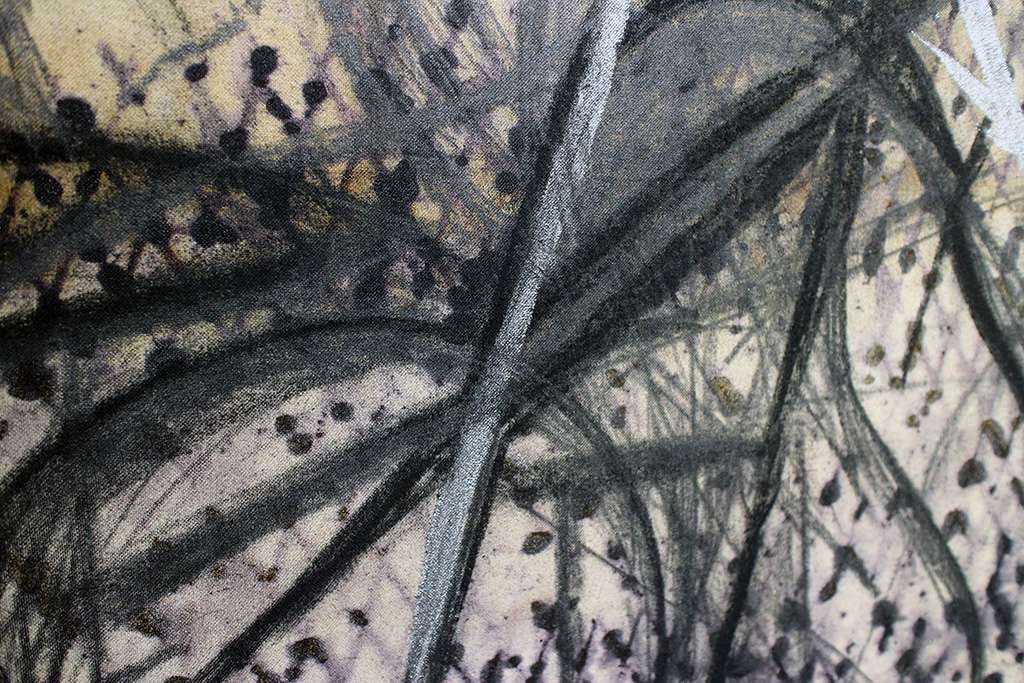
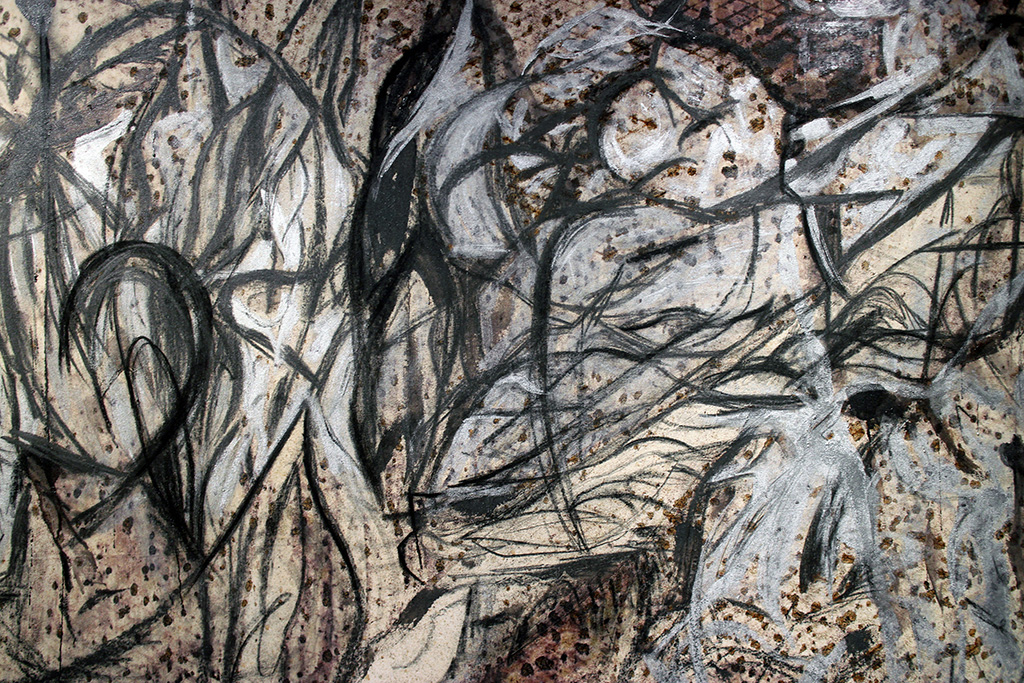
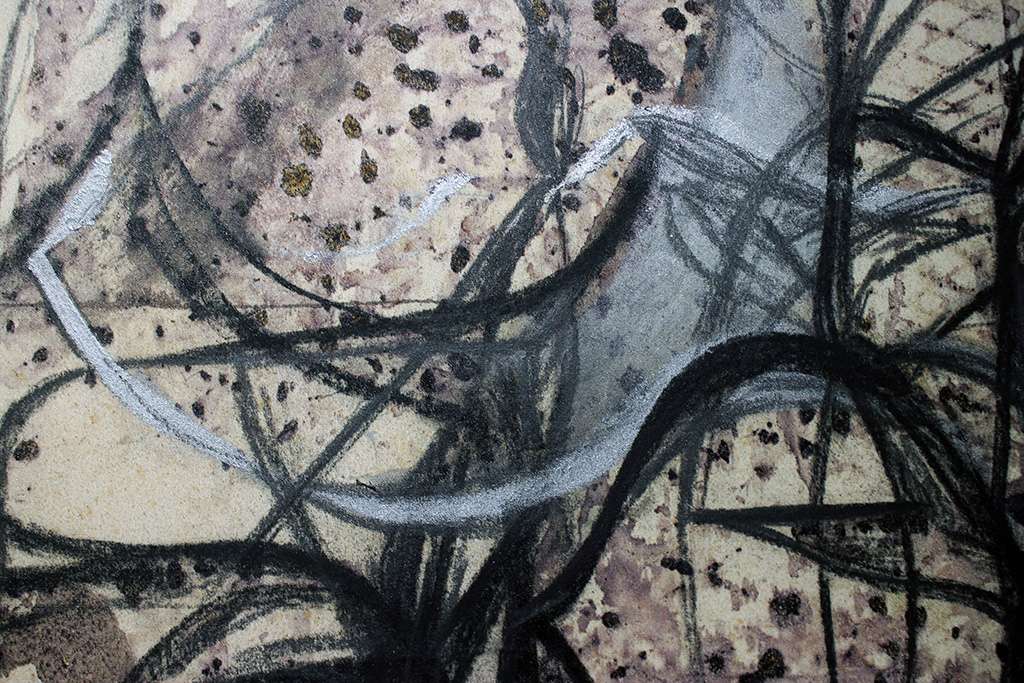
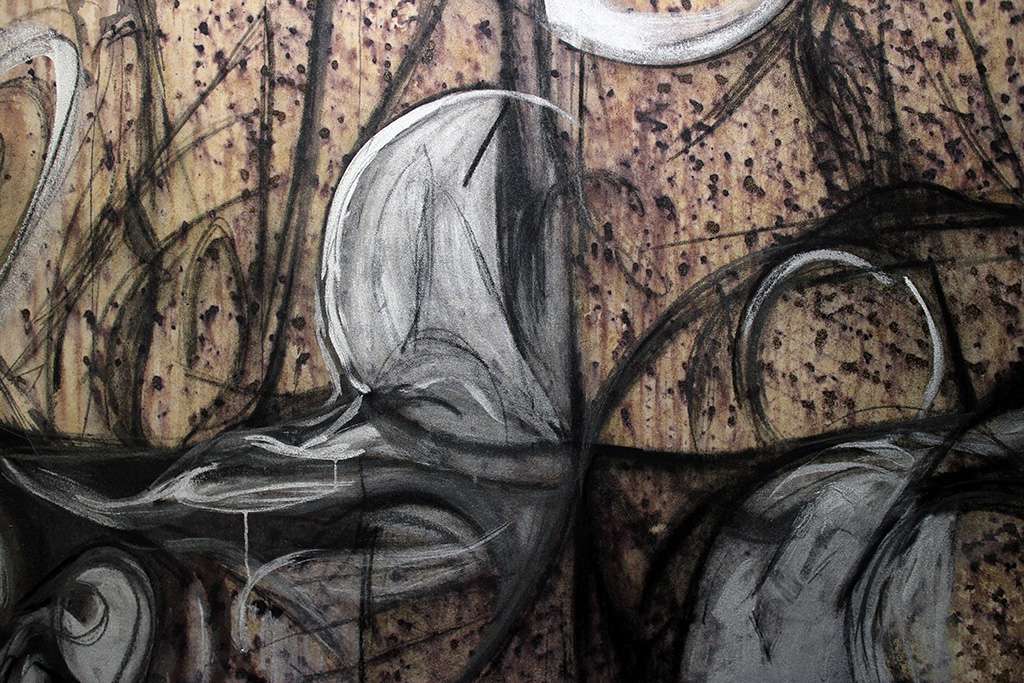
The compositions are permeated by unusual amounts of metallic surfaces and brushstrokes—results of the painter’s lush use of powdered aluminium. His rusty red grids are blanketed by their glossy opposite: expanses of shiny silver, organic in shape and alive with reflections, as if to counter the old dichotomies of nature and culture, man, and machine.
The fleeting memory of an alloy-rimmed joyride fades into the background, where it blends with the silver of the gallery walls. Consciously or not, Bottrop has us mesmerised in the belly of a huge machine, a vessel of sorts, turning his canvases into windows out onto unknown terrain, where remnants of our industrial past are churned up by natural powers, entangled in a most intriguing symbiosis.
“Jungle Rapture”